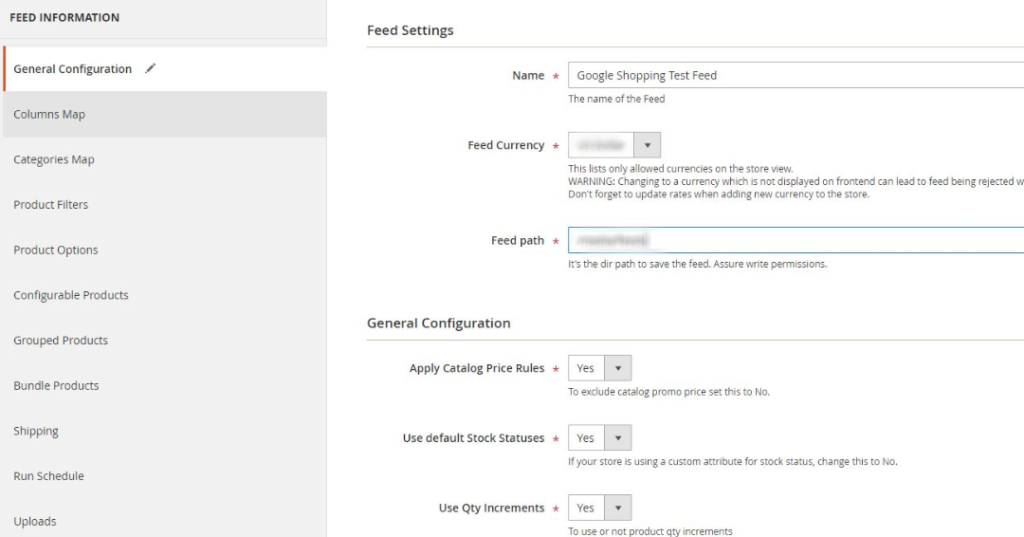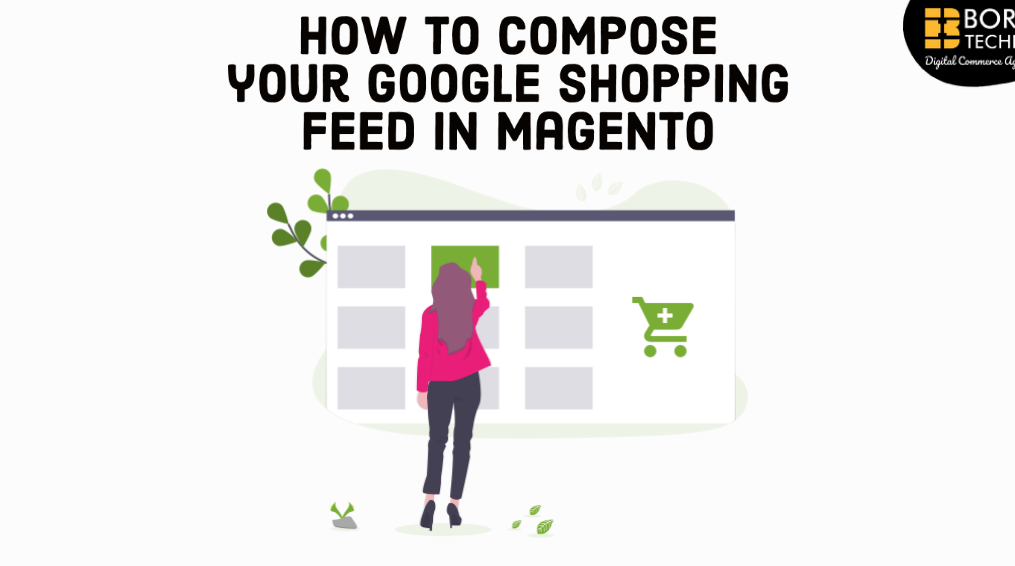How to compose your Google Shopping Feed in Magento
If you’re running an online shop, you know how crucial it is to be present when your consumers are researching the market to find their desired products. Since Google has just reported that Google Shopping expands up for free product listing ads, we’re conducting you a rapid guide on setting up and boosting your product sustain through Magento and Google Merchant Center.
What is Google Shopping Feed?
Shopping Feed is a complete list of products, along with their images, descriptions, and assigns that Google utilizes to match customer’s find terms with their outcomes on Google Shopping. And if you want your product to express, you require to have everything in place because Google will dislike all products that are not following the guidelines (but you likely already know that if you’re controlling paid shopping campaigns).
Since Google Shopping is now opening to free product listings, it’s more crucial than ever to have a great set of data in your Shopping Feed. That way, you will assist Google to appreciate your products better, which should, in the end, upgrade your online appearance.
Remain in mind that configuring the feed isn’t abundant. You will require to secure that your feed follows data quality guidelines by transferring it to Google Merchant Center. Later your products are evaluated and accepted, you can begin advertising on Google Shopping.
How to configure Shopping Feed in Magento
Now that we’ve protected the basics let’s obtain the real deal – configuring and optimizing your product nourish in Magento.
Whether you have a usage solution for shopping feed generation, or you’re utilizing a 3rd party extension, it’s crucial to do everything right in this step, to generate a detailed product feed with top-notch data. In case you don’t have any feed generation solution in your store, we would recommend the Google Shopping Feed extension (attainable for both Magento 1 and Magento 2). Since this extension is extremely elastic and easy to utilize, we are utilizing it on most of our projects to secure the standard of our feeds and shopping campaign structure.

When you’re setting up your Shopping sustain, you must retain in mind to cover basic product information, such as ID, Title, Description, Google Product Category, etc. Since we’ve already protected this topic, I won’t go into (too many) details regarding these because there are still many other fields and attributes to envelop.
Price [price]
Although this might seem attractive straightforward, it’s crucial to send accurate prices in your feed to circumvent product dissatisfaction (or even Google Merchant Center suspension).
The price you’re sending through your shopping feed must be the minimum price consumers can pay to obtain advertised products. In practice, that would mean that if you sell certain products in bundle quantities, and it’s impossible to buy only one piece, your feed should have the price per bundle (not per piece). Furthermore, a similar amount should be the most important price on your landing page and microdata markup.
If you want your ads to display the price per piece, create sure to attach [unit_pricing_measure] and
[unit_pricing_base_masure] in your feed.
Sale Price [sale_price]

Many merchants don’t involve the sale price attribute in their sustains, which causes a problem in their Google Merchant Center accounts. Why? Because Google sees divergent prices on your landing pages from those you’ve to send on in the feed.
That’s why we can’t strain sufficient how crucial it is to always have similar prices in the feed as they are grant on your landing pages and microdata markup.
Shipping Weight [shipping_weight]
Although this field is voluntary, if you’re utilizing table rate shipping or any other shipping type that depends on the product weight, you require to attach it to your shopping feed.
Brand [brand]
Attaching a Brand to your product feed is compulsory on most modern products. The rules here are easy; submit the brand assign of the products you’re selling through Google Shopping or, if you don’t have a brand allocated to products, send the producer feature instead.
Bear in mind that you should never “fake” the brand names in your feed. If you’re selling duplicates or products adaptable with fixed OEM brands, don’t capitulate the OEM brand to your product feed.
GTIN & MPN [gtin,mpn]
Global Trade Item Number [gtin] field is compulsory for all products that have GTIN allocated by the manufacturer. If you don’t have a manufacturer-allocated GTIN, you can submit the Manufacturer Part Number [mpn] alternatively.
If your products are misplacing their ideal identifiers (either GTIN or a combination of Brand and MPN), make sure to allocate a value of “no” to [identifier_exists] field within your feed.
Other values [color, size, gender, etc.]
Hanging on your products, you might require to (or want to) attach extra details in your feed, related as color, size, gender, etc.
All of these will assist Google to appreciate your products better and permit you to engage on Google Shopping, as well as to assist you to structure your paid Google Shopping Campaigns.
Before you begin attaching these values to your shopping feed, shape sure to check product data identifications. You might even find some practical attributes that you wouldn’t anticipate on your own.
Custom Label [custom_label_0]
You’ve obvious on a particular structure for your shopping campaigns, but you can’t segment the data the way you want with all attainable attributes? Add Convention Label fields to your product feed!
Whether you want to model your campaigns by price buckets, item group id, or anything else, you’ll be able to do it through custom labels. You can attach up to five practice labels per feed, so use them correctly.
Once you conclude the feed configuration, create the feed, set up the schedule for automatic initiation, and you can go on the next steps.
Let’s set up your Google Merchant Center Account!
Now that you’ve presented your feed, it’s time to set up your Google Merchant Center. If you are formerly utilizing Google Merchant Center, you can skip this step, but if you’re modern to shopping campaigns, Retain reading to set up your account.
Sign in to Google Merchant Center with the similar Google account you’re utilizing for GoogleAds. Once you’ve recorded to GMC, attach your Business information and verify your website. Fill out the rest of the information through Tools (like shipping rates and taxes), opt-in to the Google Merchant programs you’re focus on, and you’re prepared to upload your product feed.
How can you realize if your product feed is adaptable with Google policies?
You can guess, but you can’t be sure except you test it.
Download your modern product feed and upload it to Google Merchant Center as Test Feed. After a few minutes, Google will create a test feed announcement, in which you’ll be able to see if any affairs should be resolve before you upload your (real) Google Shopping Feed to Merchant Center.
Once you’re confident that the data in your feed is correct and in line with Google’s recommendations, add a new product feed to Google Merchant Center. Don’t forget to opt-in to the Aspects Across Google program to engage in these modern Google Shopping ads, schedule a daily fetch, and your feed is ready.
What if Google Merchant Center doesn’t get your uses for specific attributes?
Since Google has firm guidelines concerning the product data, and your Magento store attribute uses might not be in line with Google’s, you might require to modify your feed to observe with Google’s policies.
If you’re using Born Techies’s shopping feed, you can do it directly in the extension with Find & Replace feature on the Product Filters section. If you’re utilizing a divergent solution that doesn’t have that option, don’t worry, You can settle the matters within Google Merchant Center itself.
To do so, go to your feed in Google Merchant Center, and select “Feed Rules” in the upper right corner. Make rules for attributes (and values) you want to alter, and you’ll be great to go.

Since Merchant Center rules arrangement is a broad topic (and this article is already too long), I won’t go into respect this time. I’ll protect them in one of my next articles about Google Shopping, where I will appear you how to boost your Google Shopping feed with Merchant Center feed rules.
Once your feed is in place, and your products are accepted, you’re ready to begin advertising on Google Shopping.
I wish this article will assist you to arrange your Google Shopping feed. If you have any questions, or if you’d like to division a few tips from your experience, please leave a comment below.
If you require any assistance with your shopping feed and campaign management, reach out to see how can we assist you to achieve your business goals.
Conclusion:
Our Expertise Will helps you with your project top to bottom. We will commit to solving your issues and eCommerce development on time. Born Techies is the eCommerce enabler and official partner of Adobe Bronze Solution Partner, BigCommerce Preferred Partner & Shopware Business Partner. Born Techies –Digital Commerce agency offers Shopify, Shopware, Magento, and Bigcommerce development with the latest technologies.
For more inquiries, email us: [email protected] or else visit our website borntechies.com.

